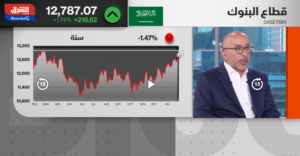Dubai is obsessed with real estate. Where every new gleaming locality and address comes along with a price tag, and where private sector developers sometimes operate as war profiteers with their endless bouquet of incentives to close the next sale.
And we admire it, this triage of the wallet. But language leads a double life, and so too does its speaker. You chat with friends and family, send emails and SMS messages and so on.
But when you enter the professional domain, language exists in another form, the stuff of double entendres and patterned artifice.
Safety in luxury
Housing, as we all know, is the core of social order. But what does that mean? And how does it explain the dizzying trends in the real estate sector.
After the boom-bust cycle that culminated in 2008, the mix of units shifted towards the more affluent sector as the mortgage appetite vanished. This led to a different development equation as profitability trumped the demand curve.
Shift to affordable
Meanwhile, even as the clamour of affordable housing accelerated, housing expenses became a juggling act for most households. As economic conditions turned sluggish, payment plans proliferated to entice buyers, even as the supply mix struggled to adapt to the changing demographic needs.
As it became clearer that affordability was the prime variable that was being asked for, “sprawl” replaced densification, as a whole series of suburban neighbourhoods started to pop up on the radar. Curiously, even as land prices in these areas were falling, unit sizes in these localities continued to shrink, as developers started to squeeze the maximum amount of profitability from each development as was humanly possible.
Contrasts
We were then left with two contradicting propositions: surveys revealed that the majority of residents had not experienced a decline in their rents, even as indices stated that rents were in fact falling by double-digits. We were getting more affordable, but presumably for some part of housing stock that many did not want.
Meanwhile, on the luxury end of the spectrum where the supply had bulged, prices fell at or close to their replacement values, as the narrative shifted to focus on the contagious cynicism about the region. So even as we marvel at the skyline of the city and admire the chutzpah of developers, we yearn for the right size of our dwellings.
These disparate and fragmented data points underscore the breadth and depth of the problem. Policy responses then can potentially include ways to incentivise developers to offer larger units. Perhaps by increasing the built-up area allowed in each of the plots, thereby reducing the cost of land.
Cut them down
Also, curbing the use of post-handover payment plans, which as the data suggests, has already largely run its course. This allows potentially a more viable mix of supply, as well as restoring the function of mortgage and related credit risk back on the balance sheet of the banks.
In either scenario, the supply pipeline contracts, forcing developers to come up with a product offering that is demanded by the populace, rather than building increasingly smaller units and then trying to incentivise buyers through generous post-handover payment plans that have started to yield diminishing utility.
Data once again enters the fray here, by examining where rents have fallen more, not merely community-wise but size-wise. This granularity then empowers both developers and investors alike to make better informed decisions.
This factor based decision-making then feeds into the confidence and market psychology, which is itself mercurial. Here again, we have conflicting data points, where asset price falls are accompanied with surveys that indicate that business sentiment is at multi-year highs.
This suggests that these surveys are possibly rear-view rather than windshield indicators. Yet commentators frequently extrapolate these data points to project future market moves. And when they do not materialise, become part of the narrative fallacy, which postulate differing weights on why the events forecasted failed to transpire.
A confidence game
Investments in existing and new real estate is an expression of confidence about expectations of future performance. The current fall in launches suggests that a more cautious narrative has taken root.
This is not necessarily unhealthy, because for all the discussions that are taking place, there is not enough emphasis being placed on the size factor of these units, which ultimately is critical for the end-user.
For this to happen, we again use standard clichés such as “out of the box” thinking metrics. But the reality is that thinking is shaped by the zeitgeist of market and regulatory forces.
For all the ingenuity expressed by the private sector in design and technology, the impulse to move towards higher profit margin products has meant that at the mid-end of the spectrum there has been a paucity of the “right size” of dwelling.
Once this is addressed, originality and ingenuity enters the solution making paradigm, and then catapults itself into a better set of decisions that reform the market at the microstructure level. Only then does the commentary of language lose its duality and artifice.
Sameer Lakhani is Managing Director at Global Capital Partners.





